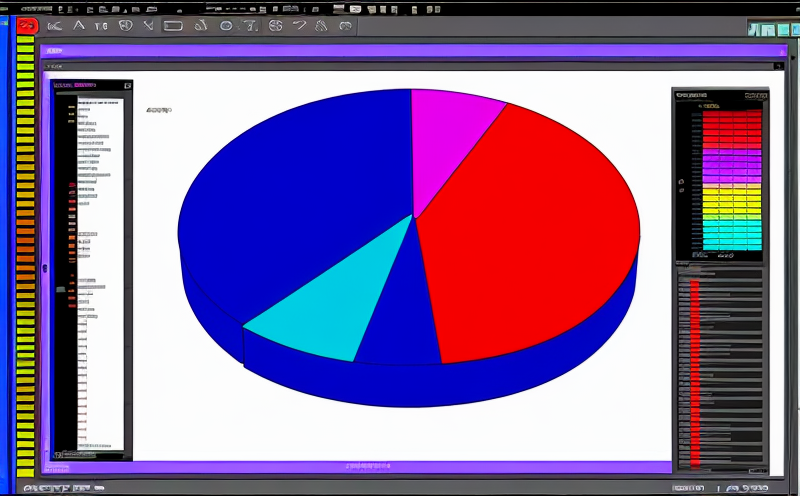ISO 21062 Thermomechanical Analysis of Thin Films
The ISO 21062 standard defines a thermomechanical analysis (TMA) method specifically tailored for the evaluation of thin films. This technique is essential in understanding the thermal and mechanical behavior of coatings, adhesives, and other thin materials that are critical in various industries such as electronics, automotive, and aerospace.
Thermomechanical analysis involves measuring the change in dimensions (length or height) of a sample while it is subjected to controlled temperature changes. The process provides insights into how thin films respond to thermal cycling, which is crucial for assessing their durability, adhesion properties, and overall performance under real-world conditions.
In the case of ISO 21062, this method focuses on thin films with thicknesses ranging from a few micrometers up to several hundred micrometers. The standard specifies precise apparatus requirements, including heating rates, temperature ranges, and specimen preparation methods that ensure accurate and reproducible results.
The testing procedure begins by preparing the sample according to ISO 21062 guidelines, which typically involves cleaning the surface to remove contaminants and ensuring uniform thickness across the specimens. The samples are then mounted onto a suitable holder for insertion into the TMA instrument.
During the analysis, the specimen is heated or cooled at a controlled rate while its dimensions are continuously monitored using laser displacement sensors. This data is collected over a defined temperature range and used to generate a thermomechanical curve that plots the change in dimension versus temperature. The shape of these curves provides valuable information about the thermal expansion coefficient, glass transition temperature (Tg), and melting point of the thin film.
The results from ISO 21062 TMA are particularly useful for quality managers and R&D engineers who need to ensure that their products meet stringent performance requirements. For instance, in the automotive industry, understanding how a coating behaves under extreme temperatures can help prevent failures during cold starts or high-temperature operation.
Thermomechanical analysis is also beneficial for compliance officers looking to verify that their materials comply with international standards such as ISO 21062. By providing detailed and accurate data, this method supports regulatory requirements and helps maintain a competitive edge in the market.
The information obtained from TMA can be used in various ways. For example, it allows for optimizing formulation processes, improving adhesion between layers of thin films, and enhancing overall product reliability. In addition, the results contribute to the development of new materials that meet specific performance criteria.
Applied Standards
The ISO 21062 standard is widely recognized for its comprehensive approach to thermomechanical analysis of thin films. It builds upon previous standards like ISO 37 and ISO 15840, which cover broader aspects of thermal analysis but lack the specificity required for evaluating thin films.
ISO 21062 specifies detailed procedures for preparing specimens, setting up the TMA apparatus, conducting tests, and interpreting results. This standard is particularly relevant in industries where thin films play a crucial role, such as electronics manufacturing, where the integrity of protective coatings can affect product performance.
By adhering to ISO 21062, laboratories ensure that their testing methods are consistent with international best practices and that results are comparable across different facilities. This consistency is vital for maintaining high-quality standards in production processes and ensuring compliance with regulatory requirements.
The standard's scope includes not only the technical aspects of performing TMA but also guidelines on reporting and documentation, which are essential for record-keeping and traceability. Compliance with ISO 21062 enhances credibility and trustworthiness among stakeholders in the industry.
Scope and Methodology
| Parameter | Description |
|---|---|
| Sample Preparation | The samples should be cleaned and mounted to ensure uniform thickness. They must have a known or specified thickness, typically ranging from 1 μm to several hundred micrometers. |
| Heating Rate | The heating rate should be controlled within the range of 1–20 °C/min. This ensures that thermal effects are accurately measured without introducing artifacts from too rapid heating. |
| Temperature Range | The temperature range for analysis is typically -50°C to +350°C, but it can be adjusted based on the specific needs of the sample and intended application. |
| Data Collection | Continuous measurement of specimen dimensions using laser displacement sensors during heating or cooling. This data is used to generate thermomechanical curves that provide insights into thermal expansion, phase transitions, and other mechanical properties. |
Benefits
The benefits of performing ISO 21062 thermomechanical analysis on thin films are numerous. Firstly, it allows for precise determination of the glass transition temperature (Tg) and melting point, which are critical for understanding how materials behave under different temperatures.
Secondly, this method provides valuable data on thermal expansion coefficients, enabling manufacturers to optimize their formulations to achieve desired properties. This is particularly important in industries where dimensional stability is paramount, such as electronics manufacturing.
The analysis also supports quality assurance and control by identifying potential issues early in the development process. By detecting flaws or inconsistencies during TMA testing, companies can address these problems before they lead to costly failures in production.
Furthermore, ISO 21062 ensures compliance with international standards, which is essential for maintaining market access and meeting regulatory requirements. This standardization enhances the credibility of test results and fosters trust among stakeholders.
The insights gained from TMA testing can lead to innovations in material science by providing a deeper understanding of how thin films respond to thermal stress. This knowledge can be used to develop new materials with enhanced performance characteristics, such as improved adhesion or better resistance to environmental factors.





